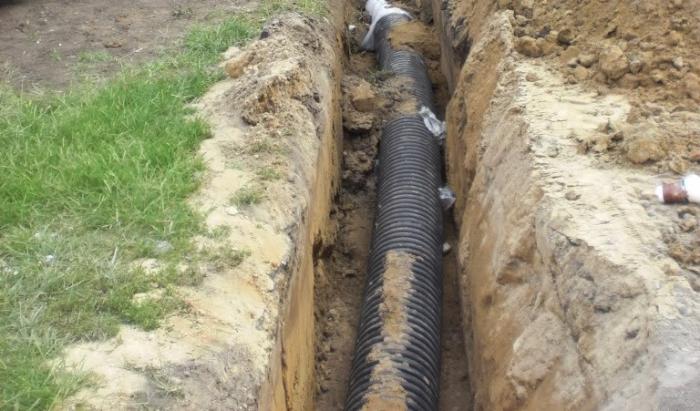Now it’s fashionable to either pave the paths near the house or lay out special tiles. When it rains, water partially drains and partially absorbs into the ground. But on the paved or otherwise covered surfaces, she simply has nowhere to go. The same can happen if the soil is clay. In addition, water flowing from the roof breaks asphalt or any other coating, flows onto the foundation of the building and slowly erodes it. Storm sewage is designed to solve the problem of removing rain and melt water and diverting it to the place of discharge. Depending on the terrain, buildings, the amount of precipitation, the technology of its construction is selected.
Elements of storm sewer
The storm sewer of a country house consists of storm water inlets that drain water flowing from the roof to a spillway, trays, pipes and inspection wells. Usually, the most suitable options for cash costs are selected. In addition, to prevent stormwater clogging, protective grilles and sand traps are provided.
Installation of storm water inlets
Storm water inlets are installed in places of accumulation of water. These can be places under drainpipes, in parking lots, on footpaths and in other places where it can drain. Sand and eroded soil accumulate in storm water inlets. This prevents clogging of the entire system. So that debris and leaves do not get into the storm water inlets, they are covered with grates on top. And still they need to be cleaned from time to time. If you do storm sewers with your own hands, then to install storm water inlets you will have to punch holes in the ceiling, and storm water inlets themselves must be installed on a layer of bitumen mastic.
Storm sewer
There is SNiP, storm sewage, regardless of who it will be designed and arranged by a specialized organization or with your own hands, it must comply with the building codes of this SNiP. The water collected in the storm water inlet passes through pipes to the collector or spillway point. If drainage is made at the site, it also discharges water into the collector. Storm sewage can be made of PVC pipes with a diameter of 110 mm. They are installed on a slope so that the water leaves by gravity. The slope should be maintained in the amount of 1 cm per 1 m of pipe. Stormwater pipes are buried to a depth below the level of soil freezing. You can not dig deep into the pipes, but then they will have to be insulated to avoid the formation of ice plugs. When installing the system with your own hands, it is necessary to trace the territory, that is, determine all the lines of the pipes, the location of the trays and wells, and then proceed with the direct construction of the stormwater. According to the marking, taking into account the depth of freezing of the soil, you need to dig holes and trenches, then a sand cushion is arranged in the trenches and grooves, after which all the elements of the stormwater are laid, all the necessary connections with the water discharge and the well are made. Then all elements are closed and gratings are installed.

Installation of manholes
Inspection pits are installed at pipe turning points and in straight sections, one for every 25 m of length. Using inspection wells, the system can be inspected and cleaned. Previously, such wells were laid out of bricks or arranged using concrete rings. Today you can purchase and install a plastic inspection well. It has a lot of advantages over old structures: it is tight, resistant to corrosion, durable, quick and easy to install, and light in weight.
Service
Usually a properly designed and properly installed storm sewer lasts a long time. Periodically, it is necessary to clean the grate from debris. But it happens that blockages occur in the system, and then it is necessary to conduct a hydrodynamic cleaning of the sewage system. This is done using special settings. Under the pressure of water, the blockage is removed, and the pipes are washed.